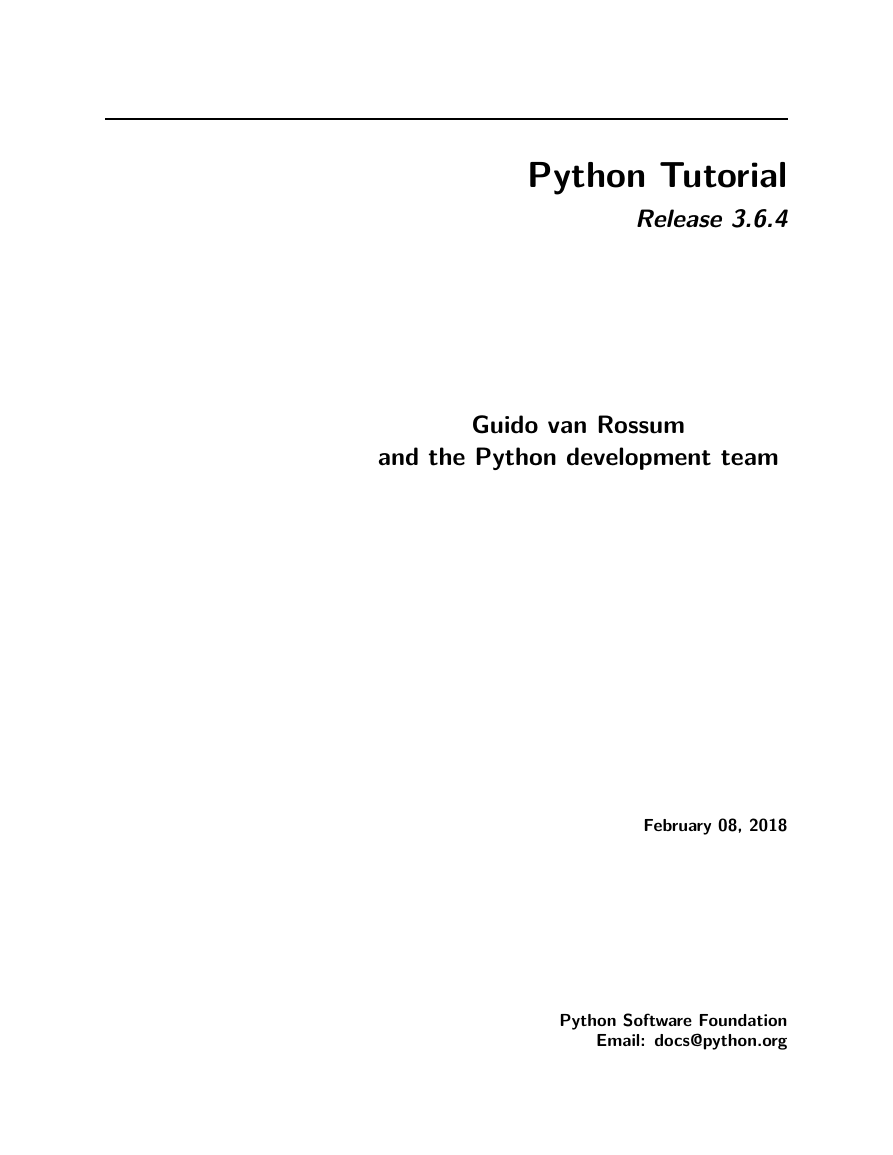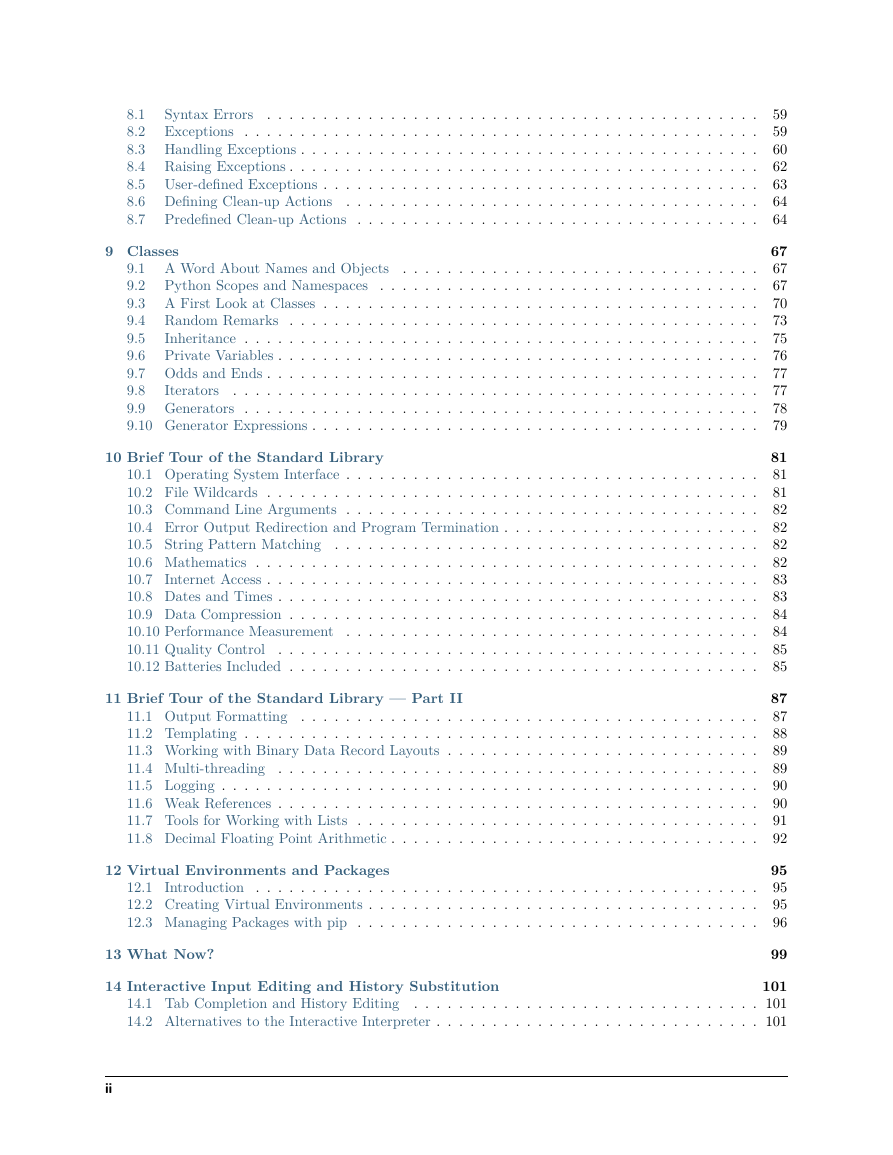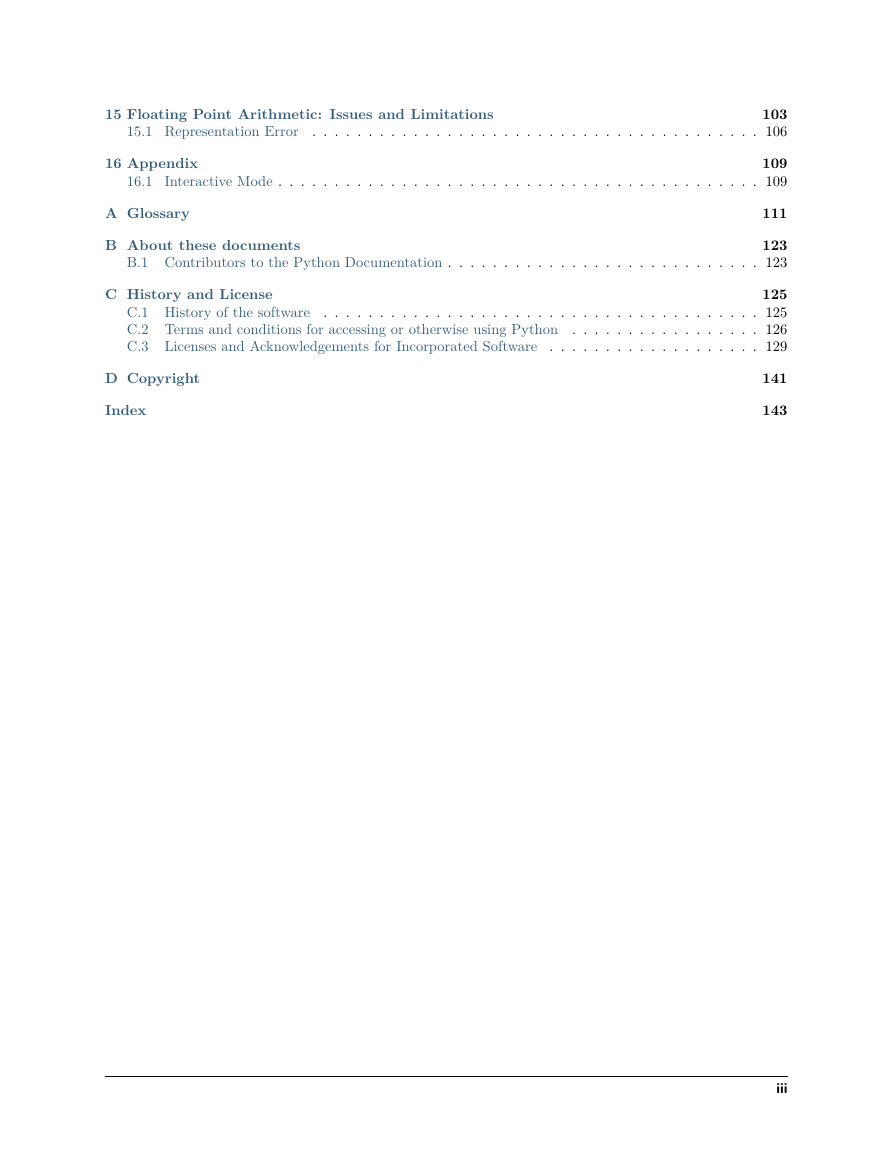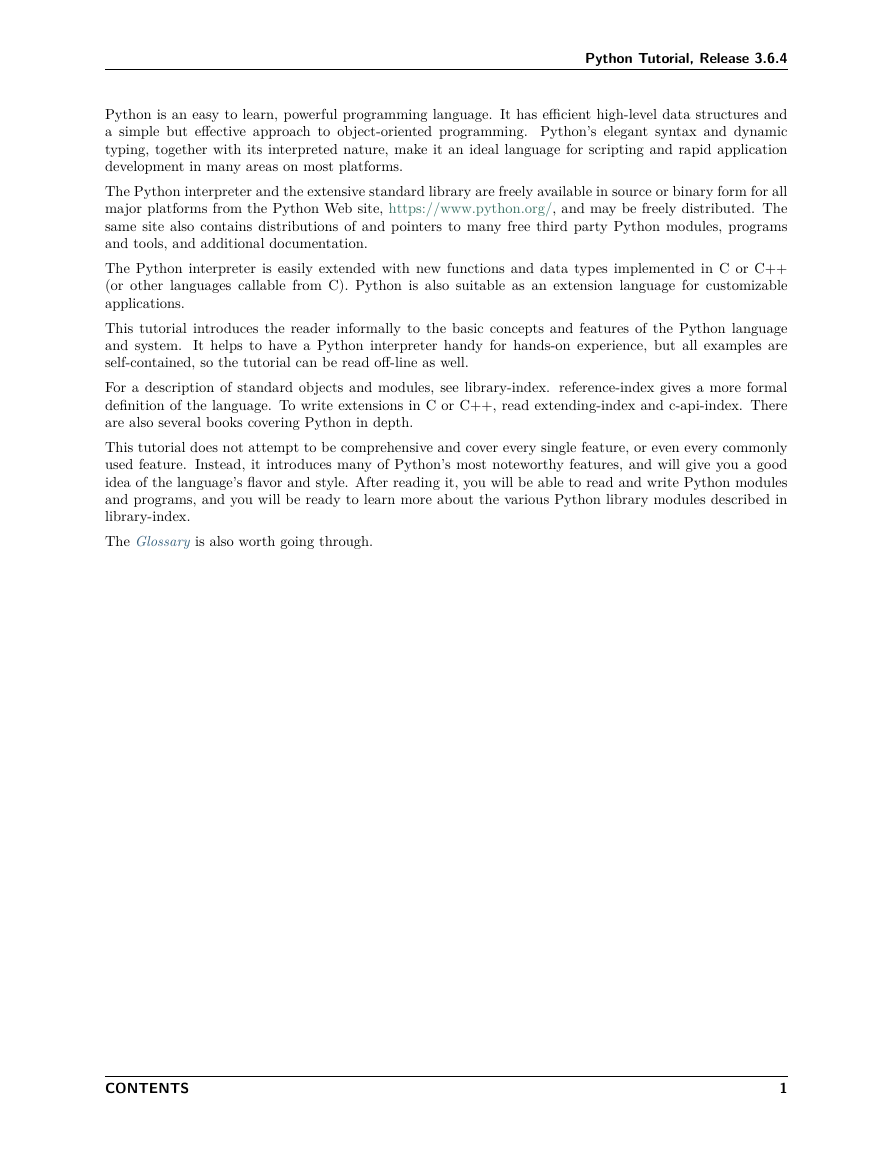Whetting Your Appetite
Using the Python Interpreter
Invoking the Interpreter
The Interpreter and Its Environment
An Informal Introduction to Python
Using Python as a Calculator
First Steps Towards Programming
More Control Flow Tools
if Statements
for Statements
The range() Function
break and continue Statements, and else Clauses on Loops
pass Statements
Defining Functions
More on Defining Functions
Intermezzo: Coding Style
Data Structures
More on Lists
The del statement
Tuples and Sequences
Sets
Dictionaries
Looping Techniques
More on Conditions
Comparing Sequences and Other Types
Modules
More on Modules
Standard Modules
The dir() Function
Packages
Input and Output
Fancier Output Formatting
Reading and Writing Files
Errors and Exceptions
Syntax Errors
Exceptions
Handling Exceptions
Raising Exceptions
User-defined Exceptions
Defining Clean-up Actions
Predefined Clean-up Actions
Classes
A Word About Names and Objects
Python Scopes and Namespaces
A First Look at Classes
Random Remarks
Inheritance
Private Variables
Odds and Ends
Iterators
Generators
Generator Expressions
Brief Tour of the Standard Library
Operating System Interface
File Wildcards
Command Line Arguments
Error Output Redirection and Program Termination
String Pattern Matching
Mathematics
Internet Access
Dates and Times
Data Compression
Performance Measurement
Quality Control
Batteries Included
Brief Tour of the Standard Library — Part II
Output Formatting
Templating
Working with Binary Data Record Layouts
Multi-threading
Logging
Weak References
Tools for Working with Lists
Decimal Floating Point Arithmetic
Virtual Environments and Packages
Introduction
Creating Virtual Environments
Managing Packages with pip
What Now?
Interactive Input Editing and History Substitution
Tab Completion and History Editing
Alternatives to the Interactive Interpreter
Floating Point Arithmetic: Issues and Limitations
Representation Error
Appendix
Interactive Mode
Glossary
About these documents
Contributors to the Python Documentation
History and License
History of the software
Terms and conditions for accessing or otherwise using Python
Licenses and Acknowledgements for Incorporated Software
Copyright
Index
















 2023年江西萍乡中考道德与法治真题及答案.doc
2023年江西萍乡中考道德与法治真题及答案.doc 2012年重庆南川中考生物真题及答案.doc
2012年重庆南川中考生物真题及答案.doc 2013年江西师范大学地理学综合及文艺理论基础考研真题.doc
2013年江西师范大学地理学综合及文艺理论基础考研真题.doc 2020年四川甘孜小升初语文真题及答案I卷.doc
2020年四川甘孜小升初语文真题及答案I卷.doc 2020年注册岩土工程师专业基础考试真题及答案.doc
2020年注册岩土工程师专业基础考试真题及答案.doc 2023-2024学年福建省厦门市九年级上学期数学月考试题及答案.doc
2023-2024学年福建省厦门市九年级上学期数学月考试题及答案.doc 2021-2022学年辽宁省沈阳市大东区九年级上学期语文期末试题及答案.doc
2021-2022学年辽宁省沈阳市大东区九年级上学期语文期末试题及答案.doc 2022-2023学年北京东城区初三第一学期物理期末试卷及答案.doc
2022-2023学年北京东城区初三第一学期物理期末试卷及答案.doc 2018上半年江西教师资格初中地理学科知识与教学能力真题及答案.doc
2018上半年江西教师资格初中地理学科知识与教学能力真题及答案.doc 2012年河北国家公务员申论考试真题及答案-省级.doc
2012年河北国家公务员申论考试真题及答案-省级.doc 2020-2021学年江苏省扬州市江都区邵樊片九年级上学期数学第一次质量检测试题及答案.doc
2020-2021学年江苏省扬州市江都区邵樊片九年级上学期数学第一次质量检测试题及答案.doc 2022下半年黑龙江教师资格证中学综合素质真题及答案.doc
2022下半年黑龙江教师资格证中学综合素质真题及答案.doc